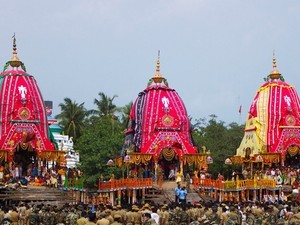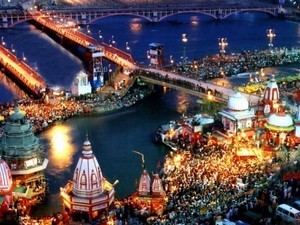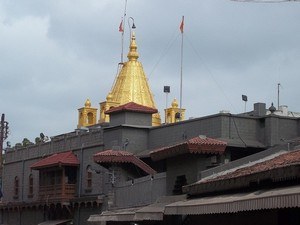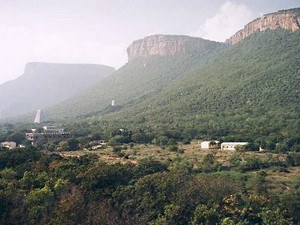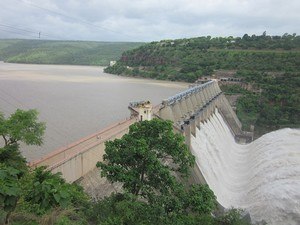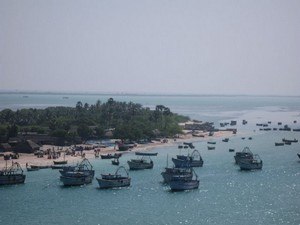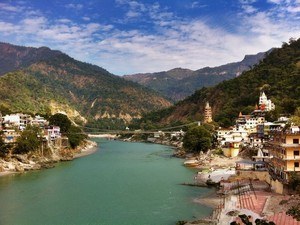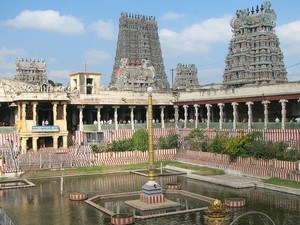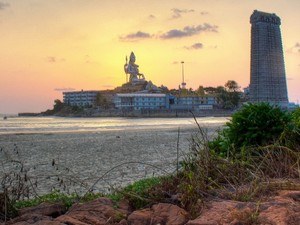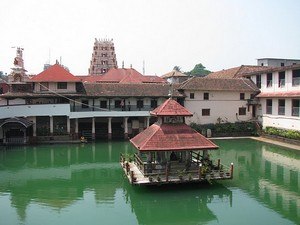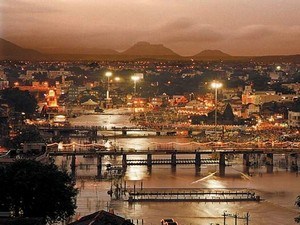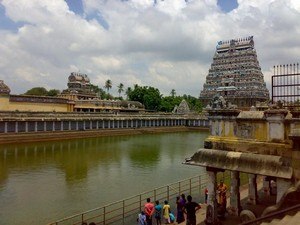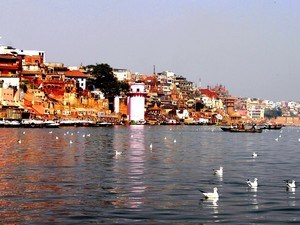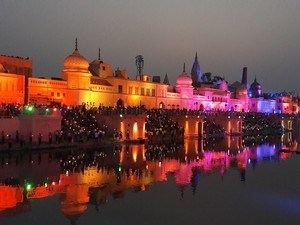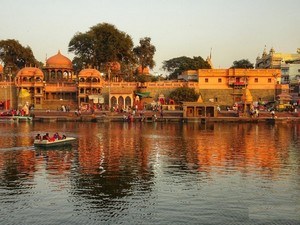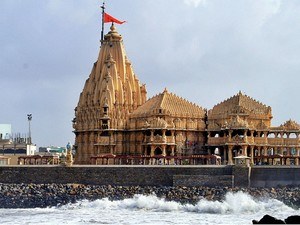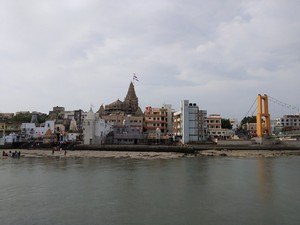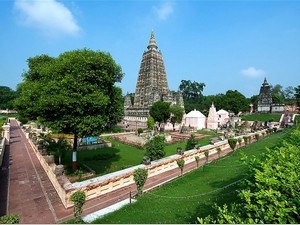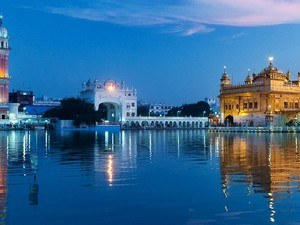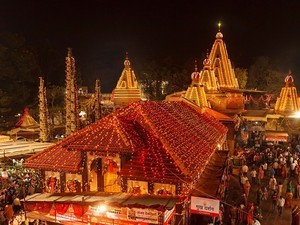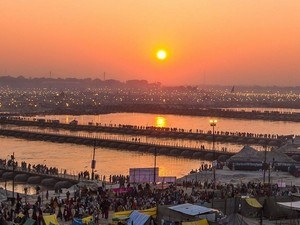1
DAY 1 : TRAVEL TO MATHURA & SIGHTSEEING
DAY 1 : TRAVEL TO MATHURA & SIGHTSEEING
 Sightseeing
Sightseeing
Leisure / No Sightseeing
About Vishram Ghat
At a distance of 4.5 Km from Mathura Junction Railway Station, Vishram Ghat is a sacred bathing ghat situated on the banks of river Yamuna in Mathura. Vishram Ghat is the main ghat of Mathura and is central to 25 other ghats. The Vishram Ghat is one of the most important ghats as the traditional parikrama starts and ends at this place. The parikrama is the circumambulation of all the major religious and cultural places of Mathura, among the most prominent
places to visit near Delhi.
History & Mythology of Vishram Ghat
According to the legend, Lord Krishna is said to have rested at this place after killing Kansa and the name Vishram Ghat is in reference to this as it means 'ghat of rest.' However, the Varaha Purana states that it was Vasudeva who rested at this site, and the ghat is named in his honor.
During the 15th Century, under the rule of the Mughal emperor, this location .....
 Duration of visit: 30 Mins
Duration of visit: 30 Mins
 Timings: Aarti: 7 PM - 7.15 PM in summer & 6.45 PM - 7 PM in winter
Timings: Aarti: 7 PM - 7.15 PM in summer & 6.45 PM - 7 PM in winter
About Dwarkadhish Temple
At a distance of 4 Km from Mathura Junction Railway Station, Dwarkadheesh Temple is a Hindu temple located near the banks of river Yamuna, close to Vishram Ghat and Gatashram Tila in the holy city of Mathura, Uttar Pradesh. The main deity of the temple is Lord Dwarkadheesh, a form of Lord Krishna. This temple is also famous by other names like Jagat Mandir or Nija Mandir. It is one of the oldest and largest temples in Mathura, and among the most visited
pilgrimage sites near Delhi.
History of Dwarkadhish Temple
The Dwarkadheesh Temple in Mathura was established in 1814 by Seth Gokul Das Parikh, who served as the treasurer for the Gwalior State under the Scindia dynasty. A devoted follower of Lord Krishna, he constructed this shrine to honor the deity. The principal deity worshipped at the temple is Lord Dwarkadheesh, a manifestation of Lord Krishna, the ruler of Dwarka, .....
 Duration of visit: 30 Mins - 1 Hr
Duration of visit: 30 Mins - 1 Hr
 Timings: 7 AM - 1 PM & 5 PM - 9.30 PM
Timings: 7 AM - 1 PM & 5 PM - 9.30 PM
About Mathura Sri Krishna Temple
At a distance of 4 Km from Mathura Junction Railway Station, Sri Krishna Janmabhoomi is the most famous temple located in the crowded city of Mathura. Dedicated to Lord Krishna, the temple is the most important site for the followers of Lord Krishna and among the must-include places in the
Mathura tour packages. Sri Krishna Janma Bhoomi also known as Katra Keshav Dev Temple is the actual birthplace of Lord Krishna. The temple is built around the prison cell in which Lord Krishna's parents, Mata Devaki and Vasudeva were imprisoned by his evil uncle Kansa.
History of Sri Krishna Janmabhoomi Temple
Sri Krishna Janmasthan Temple has been built around the prison in which Lord Krishna was born. It is believed that it was first constructed by the great-grandson of Krishna Vajranabha 5000 years ago. A bigger temple was constructed to replace the old temple during the reign of Emperor .....
 Duration of visit: 1 Hour
Duration of visit: 1 Hour
 Timings: 5 AM - 12 PM & 3 PM - 8.30 PM
Timings: 5 AM - 12 PM & 3 PM - 8.30 PM
At a distance of 2.5 km from Mathura Junction Railway Station, Government Museum, popularly known as Mathura Museum, is an archeological museum located near the Dampier Park in Mathura city. It is one of the best museums in India and also one of the popular Mathura tourist places.
The museum was founded by then collector of the Mathura district, Sir F. S. Growse in 1874. Initially it was known as Curzon Museum of Archaeology, then Archaeology Museum, and finally changed to the Government Museum, Mathura. Mathura Museum is considered one of the leading centers for research, study and the preservation of the heritage left by the Mathura School of Sculpture.
The building of the museum itself is worth visiting. This beautiful building is octagonal in shape and is made out of the red-sandstone. The museum is famous for ancient sculptures of the Mathura school dating from 3rd century BC to 12th century AD, all found from archaeological .....
 Duration of visit: 30 Mins - 1 Hr
Duration of visit: 30 Mins - 1 Hr
 Timings: 10.30 AM - 4.30 PM, Closed on Mondays, 2nd Saturdays & on National Holidays
Timings: 10.30 AM - 4.30 PM, Closed on Mondays, 2nd Saturdays & on National Holidays
About Birla Temple / Gita Mandir
At a distance of 6.5 Km from Mathura Junction Railway Station, Gita Mandir, popularly called as Birla Mandir, is located on the outskirts of Mathura, on the Vrindavan - Mathura road. The temple is dedicated to Lord Lakshmi Narayan, an avatar of Lord Vishnu. The temple has got a magnificent architecture, with exquisite carvings and paintings further enhancing its beauty. It is one of the must include places in the
Mathura pilgrimage tour packages, and is frequented by pilgrims and leisure tourists alike.
History of Birla Temple / Gita Mandir
Gita Mandir in Mathura was built by Jugal Kishore Birla, the famous Birla group in memory of his parents in the year 1988. Dedicated to Lord Krishna, the temple showcases skilled craftsmanship and is built with red sandstone. All the 18 chapters of Bhagavad Gita are written on the pillars of this temple.
Architecture .....
 Duration of visit: 1 Hour
Duration of visit: 1 Hour
 Timings: 6 AM to 7 PM
Timings: 6 AM to 7 PM
2
DAY 2 : VRINDAVAN SIGHTSEEING & TRAVEL TO DELHI
%%Itinerary_Title_Day2%%
 Sightseeing
Sightseeing
About Pagal Baba Temple
At a distance of 3 Km from Vrindavan Railway Station, Pagal Baba Temple is a beautiful and magnificent temple located in Vrindavan. Situated on Mathura - Vrindavan road, this temple is devoted to Lord Krishna. Known for its unique blend of spirituality and architectural splendor, the temple stands as an epitome of devotion to Lord Krishna, and it was founded by a saint affectionately called Pagal Baba. This is one of the prime temples to visit as part of the
Mathura - Vrindavan tour packages.
History of Pagal Baba Temple
The Pagal Baba Temple was built by Shri Sheela Nand Ji Maharaj, a former judge of the Calcutta High Court who gave up his position in search of spiritual enlightenment. He was said to be a wandering ascetic who roamed the streets of Mathura clad in tattered robes, his unkempt hair and beard flowing freely as he chanted hymns and danced in ecstatic rapture. His unique .....
 Duration of visit: 30 Mins - 1 Hr
Duration of visit: 30 Mins - 1 Hr
 Timings: 5 AM - 12 PM & 4 PM - 9 PM
Timings: 5 AM - 12 PM & 4 PM - 9 PM
About ISKCON Temple / Krishna Balaram Mandir
At a distance of 2 Km from Vrindavan Railway Station, ISKCON Temple is a popular Hindu temple situated in Raman Reti, Vrindavan. Also known as Sri Krishna Balaram Mandir, the temple is dedicated to Lord Krishna. It is one of the temples built by the International Society for Krishna Consciousness abbreviated as ISKCON, a spiritual organization that was established by A.C. Bhakti Vedanta Swami Prabhupada. The temple is one of the top
pilgrimage sites in Uttar Pradesh, and among the most visited places in the holy town of Vrindavan.
History of ISKCON Temple / Krishna Balaram Mandir
The ISKCON Temple in Vrindavan was established in 1975 and officially opened during the significant festival of Ram Navami. The temple's foundation was laid by Swami Prabhupada, the founder of ISKCON. It was the first temple to be constructed by International Society for Krishna Consciousness .....
 Duration of visit: 1 Hour
Duration of visit: 1 Hour
 Timings: 7 AM - 12 PM & 4 PM - 8.30 PM
Timings: 7 AM - 12 PM & 4 PM - 8.30 PM
About Bankey Bihari Temple
At a distance of 1 Km from Vrindavan Railway Station, Sri Bankey Bihari Mandir is a Hindu temple situated near Radhavallabh Temple in the holy city of Vrindavan. The temple is dedicated to Banke Bihari, a form of Lord Krishna. This temple is among the 7 temples of Thakur of Vrindavan, and among the must-include places in the
Vrindavan family packages. The word Banke means bent in three places, while the word Bihari means supreme enjoyer. This is how Lord Kṛiṣhṇa, who is bent in three places, got the name Banke Bihari
History of Bankey Bihari Temple
The presiding deity of the temple is Lord Krishna, and the idol of the deity was originally worshipped by Haridas Swami under the name of Kunji-bihari which means enjoyer of lakes. His disciples bestowed the name Banke Bihari due to the image's tribhaṅga posture. The idol was worshipped in Nidhivan .....
 Duration of visit: 1 Hour
Duration of visit: 1 Hour
 Timings: 7.45 AM - 12 PM & 5.30 PM - 9.30 PM in summer, 8.45 AM - 1 PM & 4.30 PM - 8.30 PM in winter
Timings: 7.45 AM - 12 PM & 5.30 PM - 9.30 PM in summer, 8.45 AM - 1 PM & 4.30 PM - 8.30 PM in winter
About Radha Ramana Temple
At a distance of 2 Km from Vrindavan Railway Station, Sri Radha Ramana Temple is a popular Hindu temple situated in the holy land of Vrindavan, Uttar Pradesh. this temple is dedicated to Lord Krishna as Radha Ramana means lover of Radha Ji. It is one among the 7 temples of Thakur of Vrindavan including Sri Radhavallabh ji, Sri Bankey Bihari Ji, Sri Govind Dev ji and three others, and among the must-include places in the
Vrindavan packages. The temple is renowned for housing the original Shaligram deity of Krishna. This idol is self-manifested from Shaligram Shila, and is characterized by a mystical smile upon his face.
History of Radha Ramana Temple
The Radha Raman Temple in Vrinvadan was established in the year 1542 by Gopala Bhatta Goswami, one of the six Goswamis of Vrindavan who followed the principles of Sri Chaitanya Mahaprabhu strictly. The temple is exquisitely crafted .....
 Duration of visit: 30 Mins - 1 Hr
Duration of visit: 30 Mins - 1 Hr
 Timings: 8 AM - 12.30 PM & 6 PM - 8 PM
Timings: 8 AM - 12.30 PM & 6 PM - 8 PM
BREAK FOR MEALS / HOTEL CHECK-IN | CHECK-OUT / SHOPPING / LEISURE
About Sri Ranganatha Temple / Rangaji Temple
At a distance of 1.5 Km from Vrindavan Railway Station, Sri Ranganath or Rangaji Temple is a Hindu Temple situated in Vrindavan. It is dedicated to Lord Ranganatha - an incarnation of Lord Krishna. The highlight of the temple is the idol of Krishna present in the form of the groom with Goda (Andal) as his bride. Rangnath ji Temple is one of the largest and the only temple built in Dravidian style in Vrindavan, one of the famous
pilgrimage sites near Delhi.
History & Mythology of Sri Ranganatha Temple / Rangaji Temple
The construction of the Rangaji temple commenced in 1845 and reached completion in 1851, incurring an expense of 45 lakhs rupees. It was established by Seth Radha Krishna and Seth Govindadasa from Chennai. This temple stands as one of the largest in Vrindavan and is enclosed by tall walls. The deity enshrined within is known as Lord Shri .....
 Duration of visit: 1 Hour
Duration of visit: 1 Hour
 Timings: 6 AM - 12 PM & 3 PM - 9 PM
Timings: 6 AM - 12 PM & 3 PM - 9 PM
About Govind Deo Temple / Govind Dev Ji Temple
At a distance of 1 Km from Vrindavan Railway Station, Govind Deo Temple, also known as Govind Dev Ji Temple, is Hindu temple located in Vrindavan. The temple is dedicated to Govind Dev Ji, a form of Lord Krishna. Also called Radha Govind Dev Temple, it is one of the most impressive Hindu temples in Vrindavan, and among the must-include places in the
Vrindavan pilgrimage packages. Govind Deo Temple has a spiritual atmosphere which mesmerizes its visitors.
History & Mythology of Govind Deo Temple / Govind Dev Ji Temple
The Govind Dev Ji Temple in Vrindavan boasts a profound history, tracing back to the 16th century when Rupa Goswami, a follower of Chaitanya Mahaprabhu, unearthed the deity at Goma Teela. According to the legend, Rupa Goswami encountered a boy who led him to the idol's location, only to vanish afterward. He came to the realization .....
 Duration of visit: 30 Mins - 1 Hr
Duration of visit: 30 Mins - 1 Hr
 Timings: 8 AM - 12.30 PM & 4.30 PM - 8 PM
Timings: 8 AM - 12.30 PM & 4.30 PM - 8 PM

